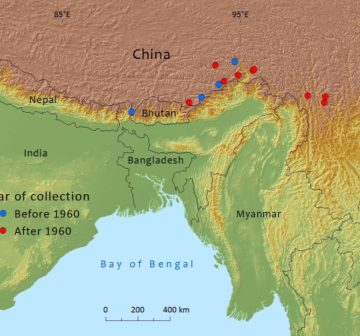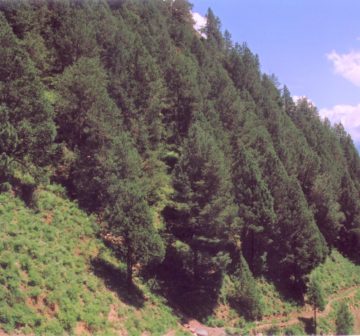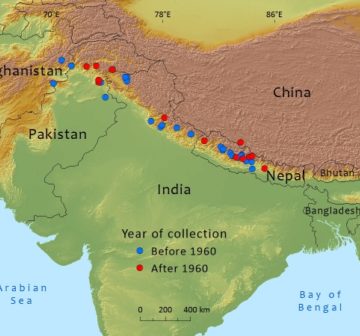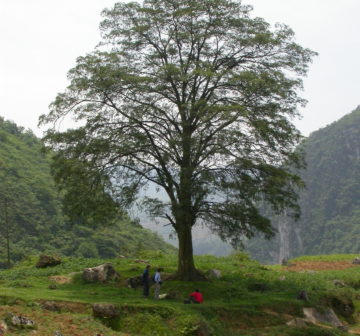Categories · Geographic Regions
Himalayas
The Himalayan Threatened Conifer Region extends from the northeastern provinces of Afghanistan in a narrow arc through northwestern Pakistan and India, through Nepal, Bhutan, Arunachal Pradesh and northern Myanmar and adjoining parts of China. Its eastern limit is at about 98° E where three major river systems (Irrawaddy, Nujiang and Mekong) converge and the main mountain ranges are orientated southwards.
Throughout the area climates and vegetation are heavily influenced by summer monsoons and the rapid rise in elevation. The conifer flora is concentrated in the mid montane areas above 1500 m a.s.l. where members of the Pinaceae and Cupressaceae dominate. Of the approximately 40 taxa that occur in this area, 22 are endemic. Most species occur in the eastern part of the region with many also occurring in Regions 7 and 8. One species, Taiwania cryptomerioides, also occurs in Region 10. Although only nine taxa have been assessed as globally threatened, several more are nationally threatened in at least one part of their range. Principal region-wide threats include harvesting for medicinal use (Taxus), overexploitation for timber and deforestation associated with agricultural and pastoral activities. Hydroelectric developments are a localized threat in some parts of the region.
There are 15 taxa in the category – Himalayas:
< Previous page · Page 2 of 2 pages
Download full list of taxa in this category as CSV
< Previous page · Page 2 of 2 pages








